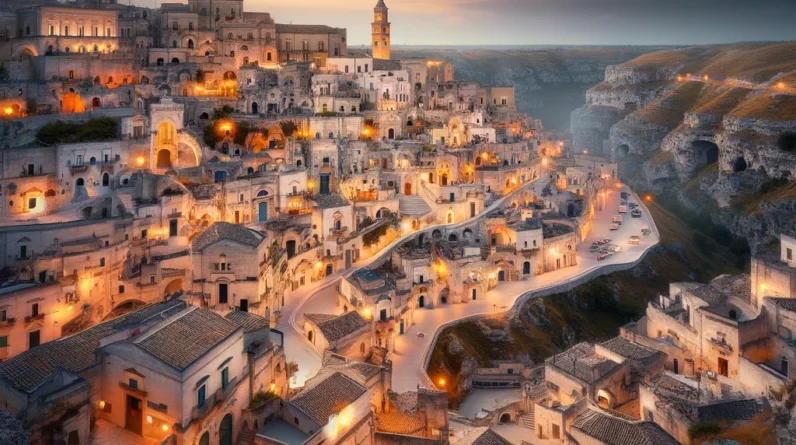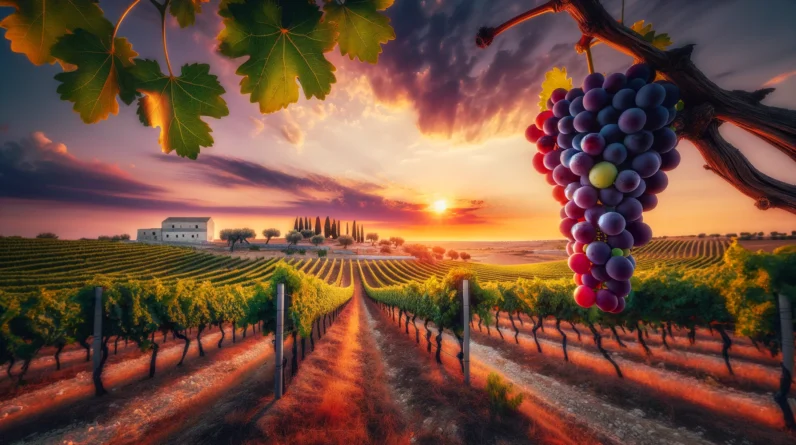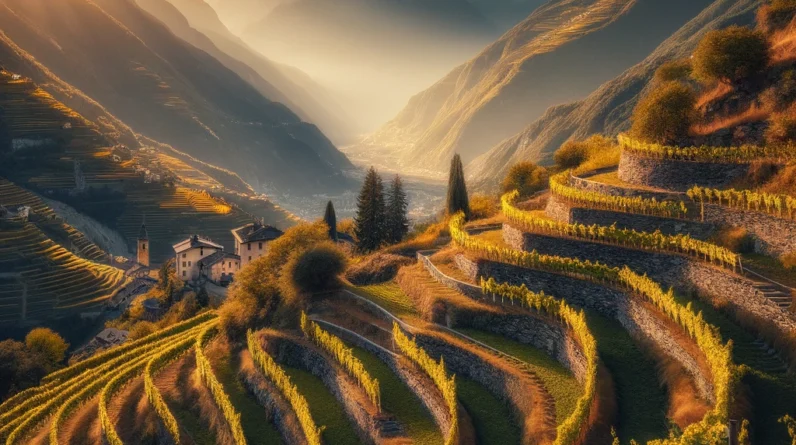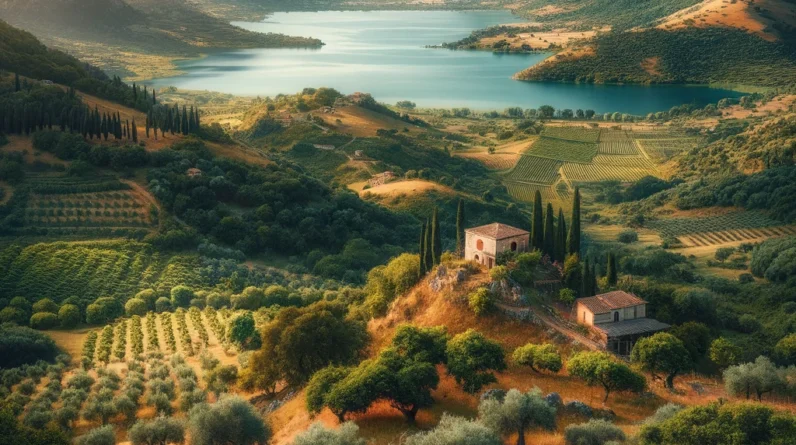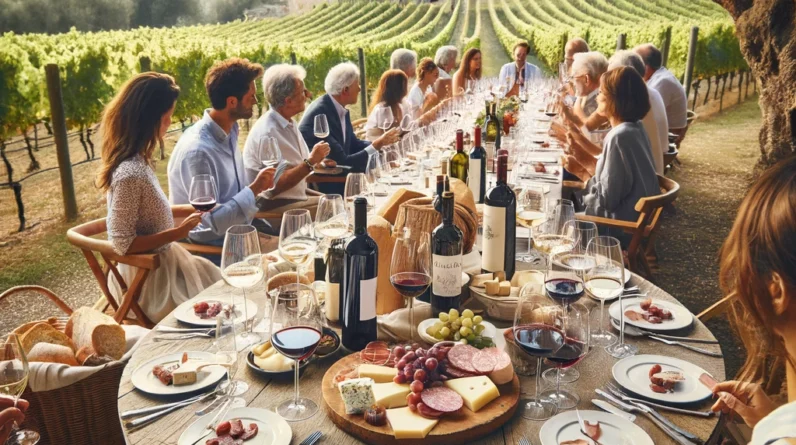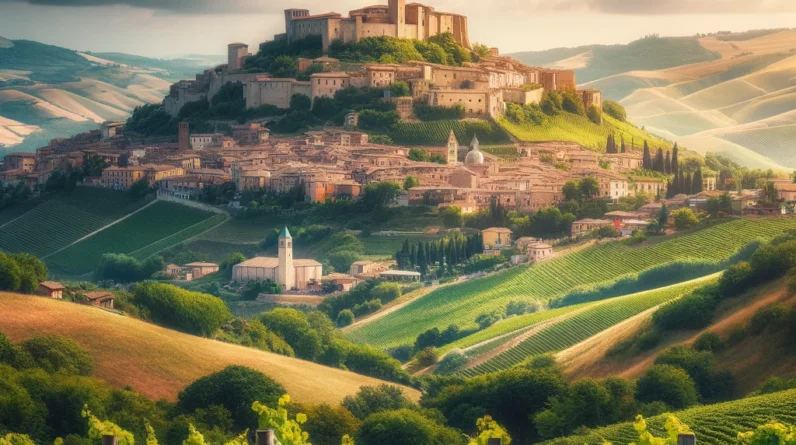
Unveiling the Majesty of Bordeaux’s Left Bank: A Journey into the Heart of Fine Wine
Welcome to the illustrious Left Bank of Bordeaux, a realm where the art of winemaking reaches celestial heights.
Here, nestled along the serene Gironde estuary, lies a tapestry of vineyards that have not just shaped the history of wine but have become synonymous with unparalleled excellence.
From the sun-kissed grapevines to the legendary châteaux that stand as sentinels of tradition and quality, the Left Bank is a living testament to the beauty and complexity of fine wine.
As we embark on this enchanting journey through the Left Bank’s prestigious appellations, from the stately Médoc to the graceful Margaux, prepare to be captivated by a world where every sip
tells a story.
This is not just a region; it’s a celebration of passion, terroir, and the timeless craft that transforms a humble grape into a masterpiece in a glass.
Join us as we unravel the mystique of Bordeaux’s Left Bank, where every vineyard has a tale to tell, and every bottle is a treasure waiting to be discovered.
Here’s to the journey into the heart of one of the world’s most revered wine regions. Let the adventure begin!
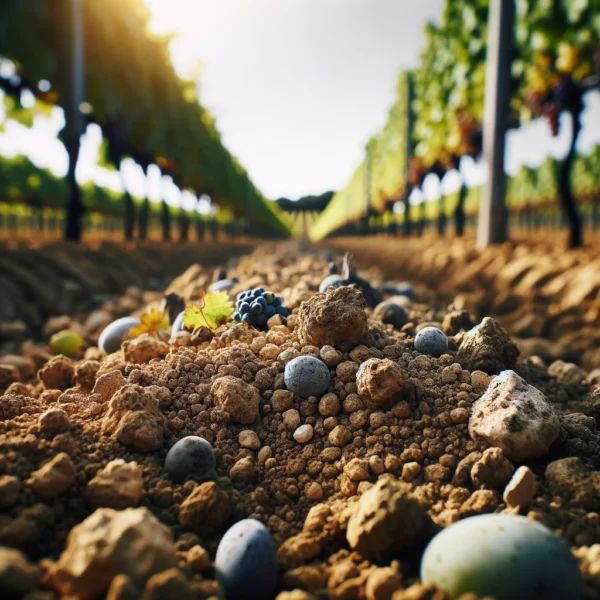
Geography & Climate
The Left Bank, a jewel of Bordeaux, stretches gracefully along the Gironde estuary and the sweeping Atlantic coast.
This region is distinguished by its flat, expansive terrain.
Here, the earth is rich with deep, coarse gravel.
This gravel is more than just soil; it’s the secret to the region’s extraordinary wines.
What makes this gravel so special?
It’s all about heat. During the day, the gravel absorbs the sun’s warmth.
At night, it releases this heat back to the grapevines.
This gentle, consistent warmth is crucial. It helps the grapes ripen to perfection, giving them their unique flavor.
But there’s more to the Left Bank than just its soil.
The maritime climate plays a key role.
This region enjoys moderate temperatures year-round.
It’s not too hot, nor too cold. This balance is ideal for growing grapes.
The ample sunlight bathes the vineyards, nurturing the vines with energy.
Moreover, the Atlantic breezes are a blessing.
They sweep through the vineyards, bringing fresh, salty air.
This breeze is not just refreshing. It helps keep the vines healthy.
It wards off diseases and pests, naturally protecting the precious grapes.
In summary, the Left Bank’s geography is a masterpiece of nature.
Flat terrain, heat-retaining gravel, moderate temperatures, and nurturing sunlight.
All these elements come together to create a perfect environment for vineyards.
It’s a place where nature and winemaking harmonize, producing some of the world’s most celebrated wines.
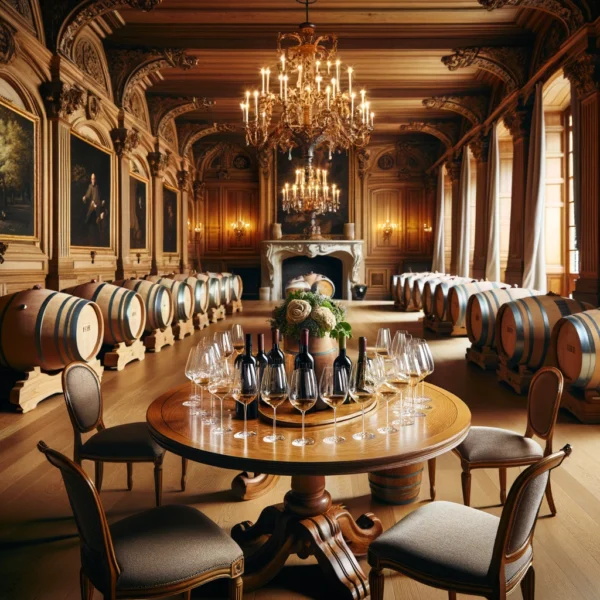
Famous Appellations
The Left Bank of Bordeaux is a tapestry of renowned wine regions, each with its own distinct character.
Think of it as a collection of elite neighborhoods, each famous for its unique style of wine.
These areas are known as appellations, and they are the heart of the Left Bank’s winemaking fame.
Take Médoc, for instance. It’s like the grand entrance to the Left Bank’s wine world.
Médoc is known for its powerful and structured wines, a reflection of its prime location and perfect grape-growing conditions.
Then there’s Haut-Médoc, a bit more inland.
It’s a step deeper into the region’s essence. Here, the wines are known for their refined elegance and complexity, mirroring the subtleties of this area’s specific terroir.
Pauillac stands out with its prestigious reputation.
This is where some of the most celebrated Bordeaux wines are born.
Pauillac wines are rich, robust, and destined for long aging, showcasing the best of what Cabernet Sauvignon can offer.
Saint-Julien, though smaller, is no less mighty. Its wines are a harmony of power and finesse.
They are well-balanced, smooth, and known for their velvety texture, reflecting the perfect blend of tradition and nature.
Margaux, with its delicate name, produces wines that are just as graceful.
Here, the wines are known for their aromatic complexity and silky tannins.
They are the epitome of elegance, much like the beautiful châteaux that dot this appellation.
Lastly, Saint-Estèphe, at the northern tip, offers something different.
The wines here are robust and full-bodied, with a hint of earthy charm. They reflect the ruggedness and authenticity of this part of the Left Bank.
Each of these appellations contributes to the Left Bank’s legendary status in the wine world.
They are not just geographic locations; they are symbols of style, taste, and the deep connection between land and wine.
Together, they form a mosaic of flavors and aromas, each telling its own story of the Left Bank’s rich winemaking heritage.
| Appellation | Known For | Primary Grapes | Famous Vineyards |
|---|---|---|---|
| Médoc
| Powerful and structured wines | Cabernet Sauvignon, Merlot | Château Latour, Château Lafite Rothschild |
| Haut-Médoc
| Refined elegance and complexity | Cabernet Sauvignon, Merlot, Petit Verdot | Château Mouton Rothschild, Château Margaux |
| Pauillac
| Rich, robust wines with long aging potential | Cabernet Sauvignon, Merlot, Cabernet Franc | Château Lynch-Bages, Château Pichon Longueville |
| Saint-Julien
| Balance of power and finesse, velvety texture | Cabernet Sauvignon, Merlot | Château Léoville-Las Cases, Château Ducru-Beaucaillou |
| Margaux
| Aromatic complexity and silky tannins | Cabernet Sauvignon, Merlot | Château Margaux, Château Palmer |
| Saint-Estèphe
| Robust and full-bodied with earthy charm | Cabernet Sauvignon, Merlot, Petit Verdot | Château Montrose, Château Cos d’Estournel |
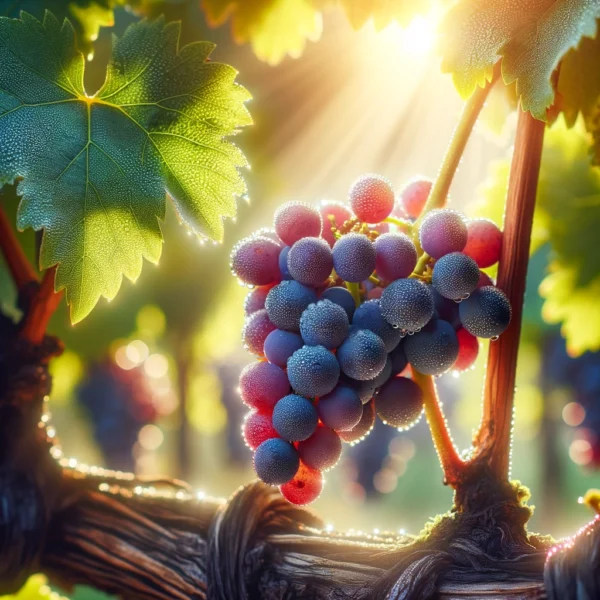
Grape Varieties
In the illustrious vineyards of Bordeaux’s Left Bank, Cabernet Sauvignon is the undisputed king.
This noble grape thrives here like nowhere else. It’s not alone, though.
It often joins forces with other grapes like Merlot, Cabernet Franc, Petit Verdot, and occasionally Malbec.
Together, they create a symphony of flavors.
Why is Cabernet Sauvignon so special here? It’s all about the soil.
The Left Bank is famous for its deep, gravelly terrain.
This kind of soil is a dream come true for Cabernet Sauvignon vines.
Gravel drains water well, so the roots of the vines stretch deep into the earth, searching for moisture.
This struggle makes the grapes more intense and flavorful.
The soil also plays another vital role. It soaks up the sun’s heat during the day and releases it at night.
This helps in maintaining a consistent temperature, which is crucial for the grapes.
It allows Cabernet Sauvignon to develop its signature structure and depth.
And then there’s the aging potential.
Wines from this region, particularly those with a high percentage of Cabernet Sauvignon, are known for their longevity.
With time, these wines evolve, developing complex flavors and aromas.
They transform from being simply delicious to becoming profoundly exquisite.
When blended with grapes like Merlot, the wines gain a softer, more velvety texture.
Merlot adds a plush, fruity quality to the wine. Cabernet Franc contributes spicy notes and a touch of elegance.
Petit Verdot, though used sparingly, brings color and vibrancy. And when Malbec joins the mix, it adds a hint of plump juiciness.
In essence, the Left Bank’s mastery of blending, coupled with the perfect growing conditions for Cabernet Sauvignon, results in wines that are not just enjoyable but are also capable of aging
gracefully for decades.
Each bottle is a testament to the region’s winemaking prowess and the exceptional qualities of its terroir.
| Grape Variety | Qualities |
|---|---|
| Cabernet Sauvignon
| Provides structure, aging potential, and deep flavors; thrives in gravelly soil. |
| Merlot
| Adds softness and a velvety texture; contributes plush, fruity qualities. |
| Cabernet Franc
| Offers spicy notes and elegance; enhances complexity and aroma. |
| Petit Verdot
| Contributes color and vibrancy; used sparingly for additional depth. |
| Malbec
| Adds a hint of plump juiciness and richness; used occasionally in blends. |
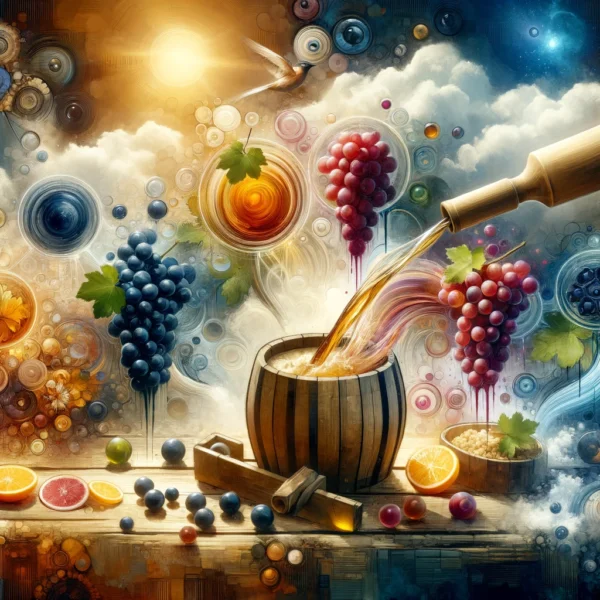
Tasting Notes
Wines from Bordeaux’s Left Bank are a force to be reckoned with.
They are known for their powerful character and strong tannins.
These aren’t just any wines; they’re bold, commanding attention with every sip.
At the heart of their flavor profile are deep, dark fruit notes.
Imagine the rich, lush taste of blackcurrants or the deep sweetness of ripe plums.
These flavors don’t just tantalize the palate; they create a tapestry of taste that’s unforgettable.
But there’s more to these wines than just fruit.
Their time in oak barrels adds another dimension.
As the wine ages, it slowly absorbs hints from the wood.
This process infuses the wine with subtle yet distinct flavors.
Think of the warm, comforting aroma of vanilla, or the earthy essence of cedar.
There’s also a touch of spice, adding a bit of mystery to every glass.
Oak aging doesn’t just add flavor, though.
It also plays a crucial role in the wine’s development.
It helps soften the tannins, making the wine smoother and more elegant.
This transformation is what makes these wines so special.
The best vintages from the Left Bank are a testament to the art of winemaking.
They offer a complexity that’s hard to define but easy to appreciate.
These wines strike a delicate balance, blending power with elegance, fruitiness with earthiness.
What’s truly remarkable is their ability to age.
Left Bank wines aren’t just for drinking now; they’re for savoring over years, even decades.
As they age, they evolve, revealing new layers of flavor and aroma.
A bottle opened after many years is not just a drink, but a journey through time.
In summary, Left Bank wines are like a rich, intricate story in a bottle.
Each sip offers powerful tannins, deep fruit flavors, and the elegance of oak aging.
They’re wines that demand to be savored, remembered, and enjoyed over the years.
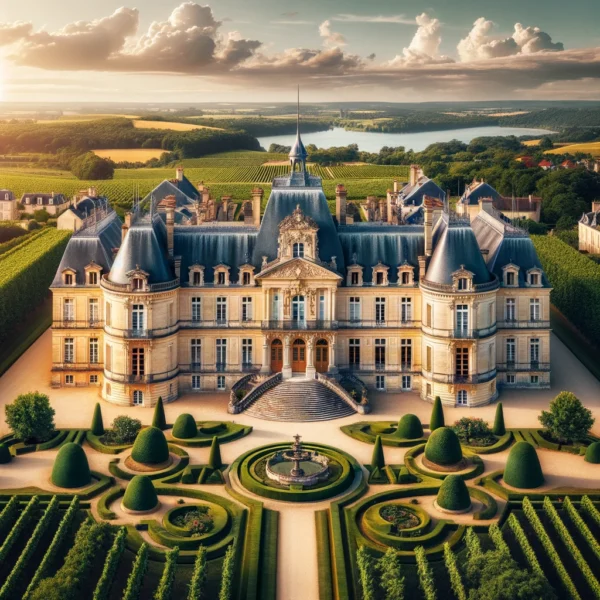
Renowned Châteaux
Bordeaux’s Left Bank is a landscape adorned with magnificent wine estates, each a kingdom in its own right.
These estates, known as “châteaux,” are more than just vineyards or buildings.
They are legendary landmarks in the world of wine.
Consider Château Lafite Rothschild. It’s not just a name; it’s a symbol of winemaking heritage.
This château is renowned for producing wines of extraordinary elegance and complexity.
Its reputation stretches back centuries, making it a beacon of tradition and excellence in the wine community.
Then there’s Château Latour. Standing tall and proud, it’s a testament to the art of fine wine.
The wines from Latour are celebrated for their powerful structure and depth.
Sipping a wine from this estate is like tasting history itself, each bottle a story of time-honored craftsmanship.
Château Margaux offers a different allure. It’s synonymous with grace and sophistication.
The wines here are like liquid poetry, known for their aromatic finesse and silky tannins.
A glass from Margaux is not just a drink, it’s an experience, an embodiment of luxury and finesse.
And let’s not forget Château Mouton Rothschild.
This estate is a blend of tradition and innovation.
Mouton Rothschild has a flair for the dramatic, known for its vibrant, expressive wines.
It’s a place where the passion for winemaking is palpable, where each vintage tells a new, exciting story.
These châteaux are more than just wine producers.
They are custodians of history, champions of quality, and pioneers in the world of luxury wines.
Their names resonate not just in Bordeaux, but across the globe, symbolizing the pinnacle of winemaking achievement.
Each estate, with its unique character and legacy, contributes to the rich tapestry that makes the Left Bank an icon in the wine world.
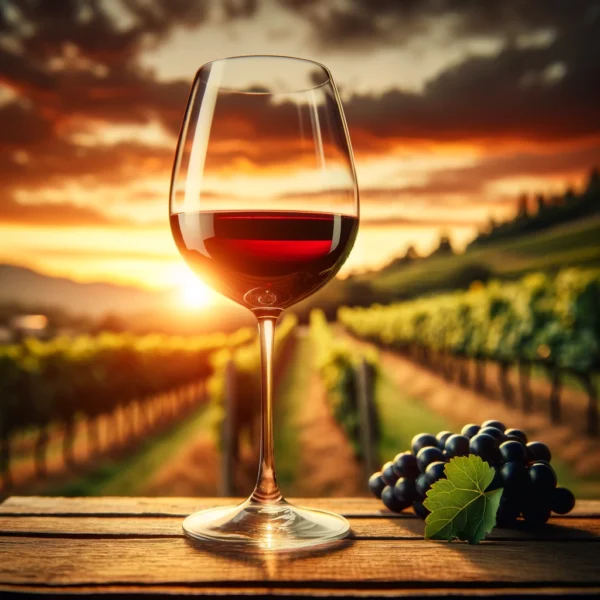
Wine Culture & Economy
The Left Bank of Bordeaux is a canvas where the art of winemaking paints every corner.
It’s a place where every vine, every bottle, tells a story steeped in rich culture and deep-rooted tradition.
This region isn’t just known for its exceptional wines; it’s celebrated for a lifestyle that revolves around the love of wine.
Wine tourism here is more than a pastime; it’s a pilgrimage for many.
Wine lovers from around the world are drawn to this haven.
They come not just to taste the wines, but to experience the essence of a region that has wine in its soul.
As visitors wander through the sprawling vineyards, they step into a world where time slows down.
Here, the vineyards are not just plots of land; they are sanctuaries where grapes are nurtured into fine wine.
Every vineyard visit offers a chance to see, touch, and understand the journey from grape to glass.
Tastings are a ritual here. They’re not just about sipping and savoring.
Each tasting session is an educational experience.
Enthusiasts get to learn about grape varieties, winemaking processes, and the subtle nuances that make each wine unique.
It’s a sensory journey that deepens their appreciation of wine.
But there’s more to explore beyond the vineyards.
The region’s wine heritage is woven into its towns and communities.
Visitors can stroll through charming villages, visit historic wine cellars, and even participate in local wine festivals.
These experiences bring them closer to the heart of Bordeaux’s wine culture.
In essence, the Left Bank is a celebration of wine in all its facets.
It’s a world where tradition meets passion, where every glass of wine is a tribute to centuries of winemaking.
For enthusiasts and connoisseurs, a visit to the Left Bank is a journey into the soul of wine, a chance to be part of a legacy that has shaped the wine world for generations.
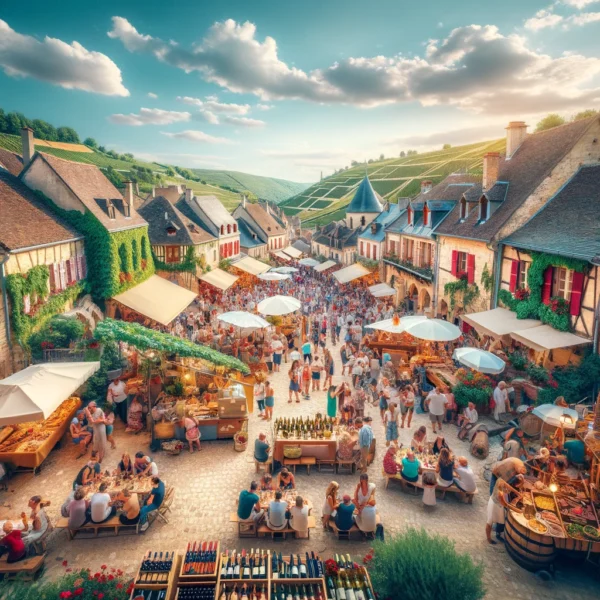
As our exploration of Bordeaux’s Left Bank comes to a close, we carry with us a deeper appreciation for this remarkable wine region.
In every vineyard’s curve, in every château’s grandeur, and in every bottle’s hidden symphony, lies the story of a land that has mastered the art of winemaking.
The Left Bank is more than a geographical marvel; it’s a symbol of heritage and prestige.
The gravelly soils whisper tales of ancient rivers, shaping a terroir that has given birth to some of the world’s most sought-after wines.
The dominance of Cabernet Sauvignon, blended with the finesse of Merlot and other varietals, creates a palette of flavors that speak of strength, elegance, and timelessness.
As aficionados and curious minds alike wander through these hallowed vineyards, they partake in a ritual that transcends mere wine tasting.
It’s an immersion into a culture that reveres the grape, a celebration of a legacy that continues to evolve while staying true to its roots.
In every glass of Bordeaux’s Left Bank wine, there is a story of passion, a taste of tradition, and a toast to the future.
As we bid adieu to this enchanting journey, let us raise our glasses to the enduring spirit of the Left Bank — a timeless testament to the artistry and allure of French winemaking.
FAQs:
Q1: What is unique about the Left Bank in Bordeaux?
A1: The Left Bank is renowned for its flat terrain, deep gravel soils, and a climate ideal for viticulture.
It’s particularly famous for its powerful, structured wines predominantly made from Cabernet Sauvignon, often blended with Merlot, Cabernet Franc, Petit Verdot, and sometimes Malbec.
Q2: What are the most famous appellations in the Left Bank?
A2: The most celebrated appellations include Médoc, Haut-Médoc, Pauillac, Saint-Julien, Margaux, and Saint-Estèphe.
Each of these has its own signature style influenced by their specific location and terroir.
Q3: Which grape varieties are most commonly used in Left Bank wines?
A3: The dominant grape variety is Cabernet Sauvignon, known for its structure and aging potential.
It is often blended with Merlot, which adds softness and fruitiness; Cabernet Franc, contributing spice and elegance; Petit Verdot, adding color and vibrancy; and sometimes Malbec, for extra
juiciness.
Q4: What are the characteristics of Left Bank wines?
A4: Left Bank wines are typically powerful and tannic, with deep flavors of dark fruits like blackcurrant and plum.
Aging in oak barrels imparts elegant notes of vanilla, cedar, and spice.
The best vintages show remarkable complexity and balance, with an ability to age gracefully for decades.
Q5: What are some of the iconic wine estates in the Left Bank?
A5: Legendary estates include Château Lafite Rothschild, Château Latour, Château Margaux, and Château Mouton Rothschild.
These estates are not just wine producers; they are icons of wine history, representing quality and luxury.
Q6: Can tourists visit the vineyards in the Left Bank?
A6: Yes, wine tourism is a major attraction.
Visitors can explore vineyards, partake in tastings, and immerse themselves in the region’s wine heritage.
Many châteaux offer tours and tasting sessions, providing a rich cultural and educational experience.
Q7: What makes Left Bank wines good for aging?
A7: The combination of grape varieties, the terroir, and the winemaking techniques, especially oak aging, contribute to the wines’ aging potential.
Left Bank wines evolve over time, developing more complex flavors and aromas, making them highly sought-after by collectors and enthusiasts.

Elevate Your Wine Journey with the Wine Folly Tasting Journal: A Chronicle of Flavors and Memories!
🍷 Capture Every Sip and Swirl in Elegant Detail! 📖
For wine lovers who cherish every tasting experience, the Wine Folly Tasting Journal is an essential companion. This elegantly designed journal is more than just a notebook – it’s a personal memoir of your wine journey.
📘 Features of the Journal:
- Sophisticated Cover Design: A beautiful and durable cover that encapsulates the essence of wine exploration.
- Structured Tasting Sections: Thoughtfully organized pages to record your tasting notes, ratings, and memories.
- Tips and Guides: Helpful hints on how to taste wine and identify flavors, enhancing your sensory experience.
🌄 Set Against the Serene Backdrop of Vineyards, this journal is perfect for use in a cozy wine tasting room or during a tranquil evening at home. It invites you to delve deeper into your wine tasting adventures, transforming each glass into a story to be chronicled.
🍾 Why Choose Our Tasting Journal?
- Deepen Your Wine Knowledge: Track and compare your tastings, developing a more refined palate over time.
- Create Lasting Memories: Look back on your wine experiences with fondness and detail.
- Perfect for All Wine Enthusiasts: Whether you’re a novice or a seasoned taster, this journal caters to all levels of wine appreciation.
📚 Transform Your Tastings into Treasured Moments: The Wine Folly Tasting Journal is not just a tool; it’s a treasure trove of your wine experiences.
🎁 An Ideal Gift for Wine Aficionados: Surprise the wine lover in your life with a gift that’s both practical and thoughtful.
🔗 Discover the Wine Folly Tasting Journal on Amazon
🥂 Here’s to Memories One Glass at a Time – Happy Tasting!


